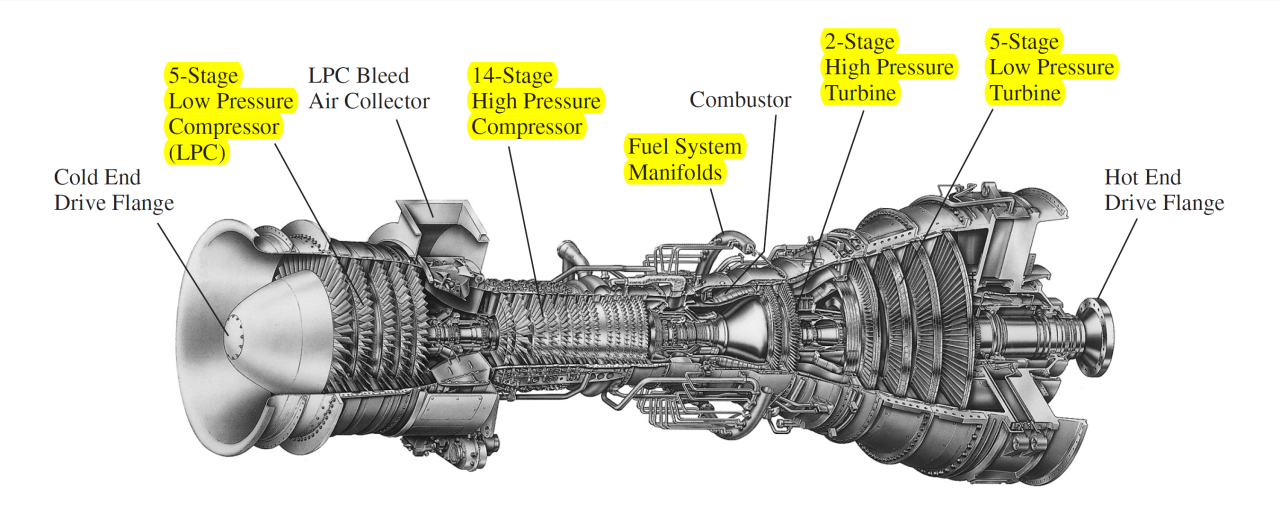
How does a gas turbine works?
There is a fuel system manifold in the middle that has fuel injection as well as ignition systems. In the left hand side of the fuel system, there is two compressors, namely high pressure and low pressure compressors, and at the right hand side there is also two high and low pressure turbines.
Usually at the first step, an external driver such as an electric motor drives the compressors helping the air inlet through air collectors. The air is compressed by compressors, enters the ignition system, ignition takes place and the chemical energy of fuel is converted to pressure, the ignition product as pressurized air indeed rotates turbines and thereby rotating the compressors. Thus the compressors that rotates by an external driver at the first step, now are rotating by chemical energy of the fuel combustion, and thus the external driver can be put in off position.
At the end it can be seen that combustion air products that gained their energy from fuel combustion drive the turbines. This energy is high enough to rotate the compressor shaft as well as producing electricity from turbine rotation. Thus the completed idea is converting chemical energy into electrical energy.
The exhaust gas has relatively high velocity as well as temperature that can be used in jet motor driving force as well as producing steam from thermal energy of exhausted air respectively.
The high-pressure turbine is exposed to the hottest, highest-pressure air, and the low-pressure turbine is subjected to cooler, lower-pressure air. The difference in conditions leads to the design of high-pressure and low-pressure turbine blades that are significantly different in material and cooling choices even though the aerodynamic and thermodynamic principles are the same.